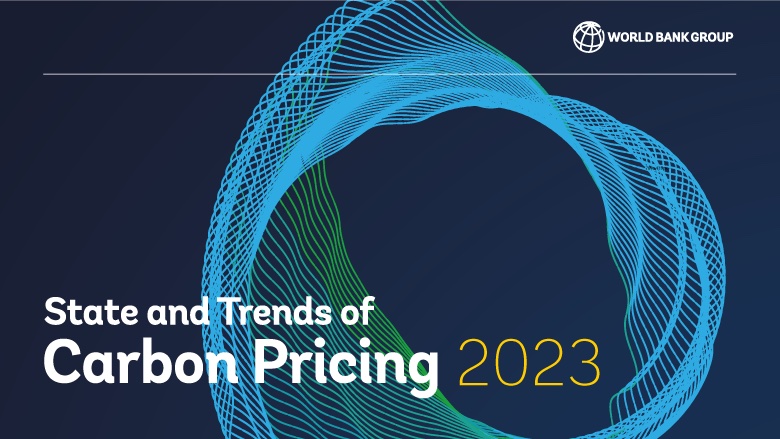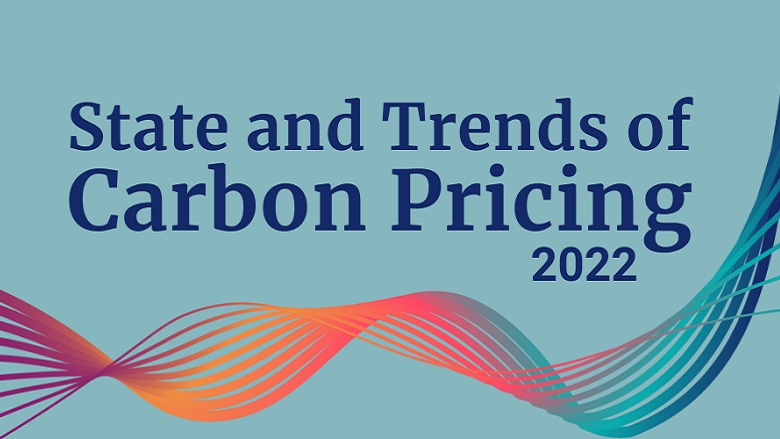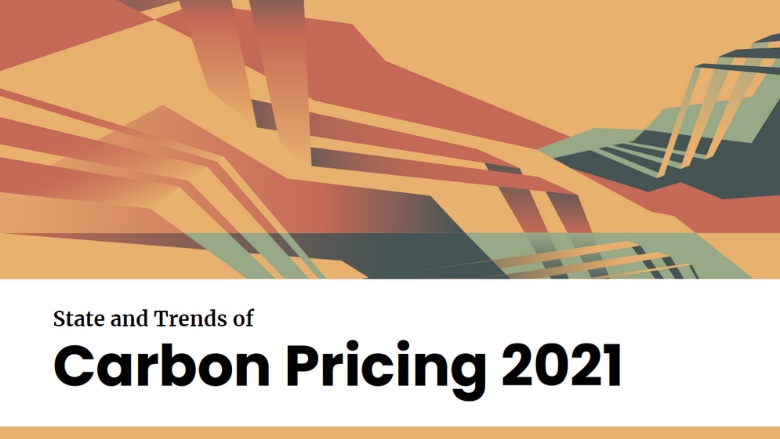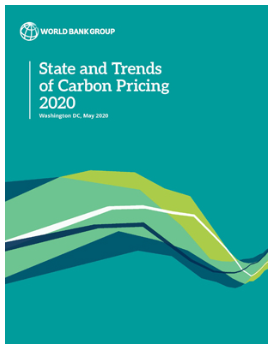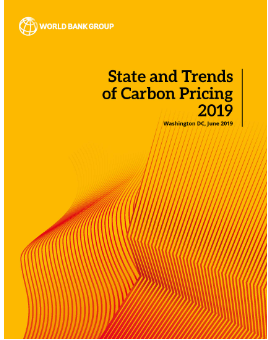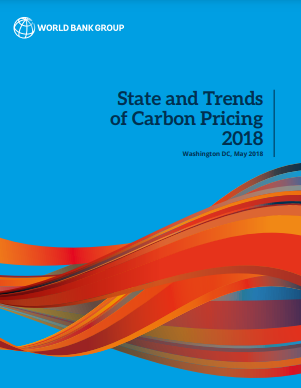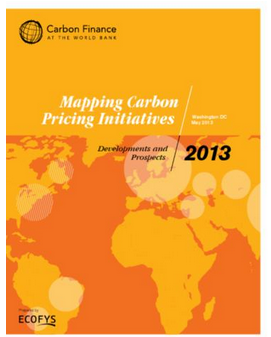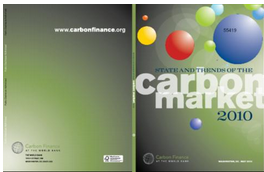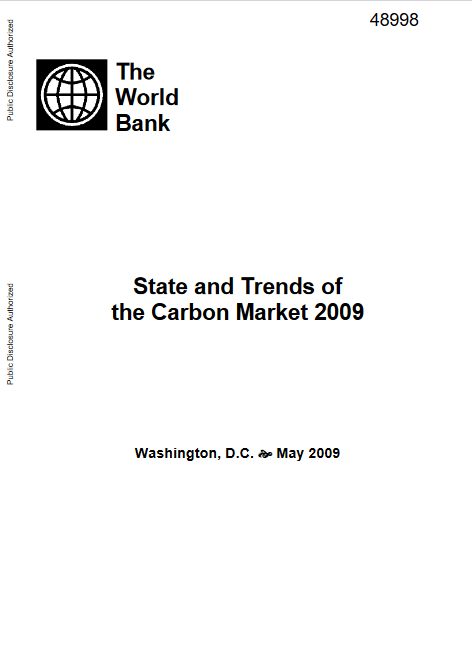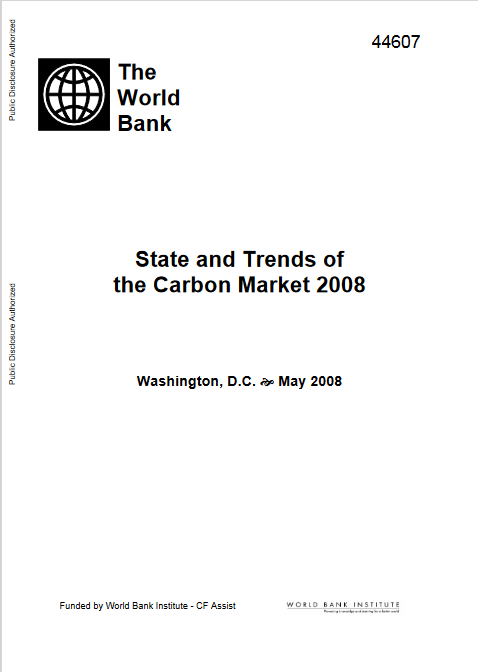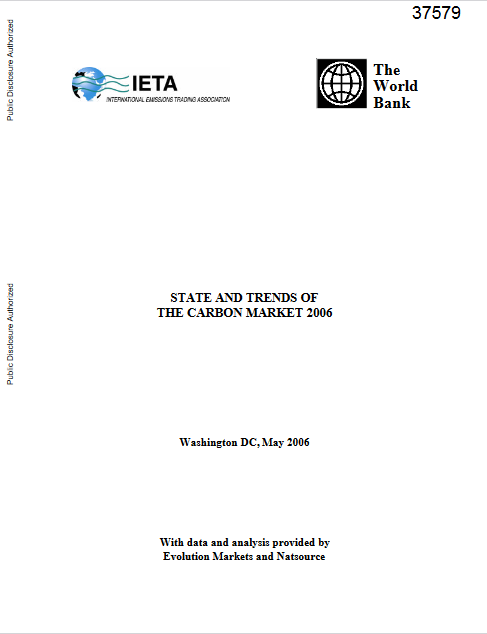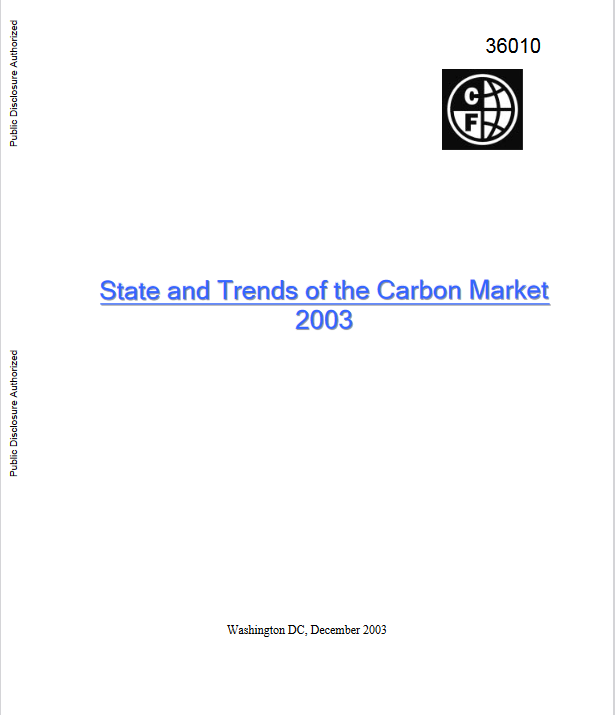The State and Trends of Carbon Pricing Dashboard is an interactive online tool aimed at policymakers, businesses, and researchers. It provides the latest available information on existing and emerging direct carbon pricing initiatives – Emissions Trading Systems, Carbon Taxes and Carbon Crediting - around the world and includes data published in the World Bank’s State and Trends of Carbon Pricing report.
The World Bank maintains the Dashboard, with support from organizations and governments that provide information and insights. The International Carbon Action Partnership (ICAP) supports the dashboard with the latest data on Emissions Trading Systems (ETS). As a forum for governments ETSs, ICAP fosters experience-sharing and collaborative alignment of domestic carbon markets.
The Dashboard and the accompanying State and Trends of Carbon Pricing annual report series serve as cornerstones in various World Bank initiatives to promote well-designed carbon pricing systems worldwide. These include:
-
Partnership for Market Implementation (PMI): the PMI assists countries in aligning carbon pricing instruments with development priorities. As a 10-year program targeting a capitalization of US$250 million, PMI offers a long-term vision for viable carbon markets and supports programs contributing to the Paris Agreement goals.
-
Mitigation Action Assessment Protocol (MAAP): the MAAP provides an online tool for evaluating the risks and performance of climate actions and policies. MAAP has four modules that focus on project or program-level assessments, specifically in relation to mitigation action design, capacity of the management entity, financial sustainability of the mitigation activity, and development benefits.
For further inquiries, please Contact Us.
The Carbon Pricing Dashboard includes data published in the World Bank’s State and Trends of Carbon Pricing Report. This includes data on compliance instruments (ETSs and carbon taxes) and carbon crediting markets. Click on the link below to download the data.
Carbon pricing seeks to align the costs of consuming carbon-intensive fuels or using carbon-intensive processes with the social costs of doing so. If well designed, and sufficiently ambitious, carbon pricing can create strong economic incentives for the changes needed in investment, production, and consumption patterns, and to induce technological advancements, reducing the extent of additional public investment needed. Well-designed carbon pricing policies can help raise revenues in a more efficient and less distortive way than alternative options, like labor taxes, and can yield numerous benefits to society beyond climate mitigation. Carbon pricing is an important policy tool that can be used as part of a comprehensive policy package to decarbonize economies.
Carbon pricing mechanisms can vary. The State and Trends of Carbon Pricing Dashboard and report series focus on direct carbon pricing – Emissions Trading Systems (ETSs), carbon taxes, and carbon crediting, which are implemented to reduce GHG emissions by providing a price signal closely linked to actual emissions. Other types of carbon pricing include indirect carbon pricing and internal carbon pricing. Below is an overview of each of these types of carbon pricing initiatives.
Direct carbon pricing
On the carbon pricing dashboard, direct carbon pricing instruments are categorized as ‘compliance’ instruments or ‘carbon crediting’. Under ‘compliance’ instruments (such as emissions trading systems or carbon taxes), covered entities are obligated to pay for the emissions from covered activities. Participation in carbon crediting on the other hand is optional, with participants earning “credits” in recognition of quantified and verified emissions reductions or removals.
- In an emissions trading system (ETS), the government places a limit on the amount of GHG emissions from covered entities. Entities must surrender emission units (or “allowances”) to cover their emissions within a compliance period. Each emission unit represents the right to emit a certain volume of emissions (typically 1 tCO2e) and can be traded between covered entities or sometimes with other traders. There are several different types of ETSs, including “cap-and-trade” and “rate-based” approaches, and different terms are used for the emission units within different systems. The carbon price in these systems is usually a function of supply and demand for emission units.
- Through a carbon tax a government levies a fee on covered entities for their GHG emissions, providing a financial incentive to reduce emissions. Under a carbon tax, the government sets the price of emissions (the tax rate). The resulting volume of emissions reductions achieved by the policy is determined by the response of the emitting entities to the set price.
- Under a carbon crediting mechanism, tradable credits (representing 1 tCO2e) are generated through voluntary emissions reduction activities. Carbon credits are issued to activities that reduce emissions, according to protocols that aim to ensure each credit represents a genuine emission reduction. Credits can then be sold to buyers, generating revenue. Carbon credits can represent emissions reductions achieved through either avoidance (preventing GHG emissions from entering the atmosphere - like capturing methane from landfills before it is released), or removal (taking GHGs from the atmosphere, for example through sequestering carbon through afforestation). While carbon crediting mechanisms can create a source of supply of emission reductions they rely on a separate source of demand for credits in order to deliver a financial incentive to reduce emissions. Demand for credits can come from compliance instruments (ETSs or carbon taxes that allow the use of offsets), countries meeting Nationally Determined Contribution (NDC) targets under the UNFCCC, voluntary offsetting (sometimes linked to internal carbon pricing), or for results-based climate finance (see Glossary).
Emerging measures aim to extend direct carbon pricing to imported (or exported) emissions-intensive goods through a border carbon adjustment (BCA). Under a BCA, a government imposes a carbon price at the jurisdiction’s border on the emissions embodied in certain carbon-intensive goods that are imported from (or exported to) other jurisdictions. The main objective of a BCA is to equalize the carbon price levied on foreign-produced goods with the carbon price charged on domestically produced goods (through a carbon tax or an ETS) in order to level the playing field and prevent carbon leakage. BCAs are not included on the State and Trends Dashboard.
Indirect carbon pricing
Indirect carbon pricing refers to instruments that change the price of products associated with carbon emissions in ways that are not directly proportional to the relative emissions associated with those products. These instruments provide a carbon price signal, even though they are often (primarily) adopted for other socioeconomic objectives, such as raising revenues or addressing air pollution. Examples of indirect carbon pricing include fuel and commodity taxes, as well as fossil fuel subsidies affecting energy consumers. For example, fuel excise taxes apply a tax to the volume of fuels, such as gasoline and diesel (e.g., dollars per liter), which places a price on the carbon emissions from the combustion of those fuels. However, the price is not determined in proportion to the relative emissions resulting from the combustion of those fuels. Conversely, fuel subsidies that reduce the price of fossil fuels create a “negative” indirect carbon price signal, which incentivizes higher consumption and therefore increases carbon emissions.
While carbon pricing policies can be categorized as direct or indirect, in practice the distinction is not always obvious. The most direct carbon pricing policy would apply an equivalent and proportional incentive to reduce GHG emissions across all sectors and fuels. Indirect carbon pricing policies still create a price signal that applies to fossil fuels or products, but they are not designed to apply a consistent price across emissions from different sources (e.g., the price is not linked to actual GHG emissions or the carbon content of fuels). ETSs, carbon taxes, and carbon crediting are direct carbon pricing policies, but in reality, all examples of these policies currently in operation differ across sectors, fuels, activities, and/or gases. As a result, the distinction between direct and indirect carbon prices is less stark in practice, and carbon pricing policies sit on a spectrum from direct to indirect.
For more details on different types of carbon pricing initiatives see Chapter 5 in Data for a greener world.
Internal Carbon Pricing
Some organizations voluntarily use different kinds of internal carbon prices (ICPs) to manage climate-related business risks and prepare for the transition to climate neutrality. Shadow pricing assigns a theoretical price per unit of emissions, which is then factored into the organization’s decision-making processes. Through internal carbon fees, organizations allocate ‘fee’ revenues to fund emissions reduction activities. Other types of ICPs include implicit carbon pricing, offset purchasing and internal carbon trading. Organizations can use ICPs to manage scope 1 (direct), scope 2 (electricity use), or scope 3 (other supply chain) emissions. For more information on internal carbon pricing see the CDP.
How do Governments use direct carbon pricing?
While ETSs, Carbon Taxes and Carbon crediting all create incentives to reduce greenhouse gas emissions, each can be tailored to also deliver broader benefits, such as raising revenue, addressing local pollution, or attracting international finance. Governments select the design and combination of carbon pricing policies based on national circumstances and political realities. As a result, there is significant heterogeneity in carbon pricing polices across jurisdictions. ETS, Carbon Taxes and Carbon crediting are often used in complementary ways, sometimes combined into hybrid approaches. The State and Trends of Carbon Pricing Dashboard and Report series provides detailed information on the different approaches taken to direct carbon pricing and the drivers behind these trends.
International Carbon Pricing
Overlaying these direct carbon pricing instruments are systems of carbon accounting under the UNFCCC that allow trading of mitigation outcomes, including carbon credits, between countries in order to meet their targets.
International carbon pricing gained momentum with the Kyoto Protocol in 1997, which aimed to reduce greenhouse gas (GHG) emissions by industrialized countries (Annex I countries). This was accomplished through domestic actions or through three flexibility mechanisms:
- International Emissions Trading
- Joint Implementation
- Clean Development Mechanism
The 2012 Doha amendment extended these mechanisms until 2020, laying the foundation for cross-boundary carbon markets.
Carbon pricing can play a pivotal role in realizing the ambitions of the Paris Agreement and implementing the Nationally Determined Contributions (NDCs). Article 6 of the Paris Agreement provides a basis for facilitating international recognition of cooperative carbon pricing approaches and identifies new concepts that may pave the way for this cooperation to be pursued. Paragraph 136 of the first COP 21 Decision (Adoption of the Paris Agreement) recognizes the important role of providing incentives for emission reduction activities, including tools such as domestic policies and carbon pricing.
Many of the plans submitted to the UNFCCC recognize the important role of carbon pricing, with about 100 countries planning or considering carbon pricing mechanisms in their intended NDCs.
The State and Trends of Carbon Pricing Dashboard draws on a range of sources, including official reporting (i.e., government budget documents), related legislation that underpins the carbon pricing initiative, statements from governments and public authorities, and information provided by jurisdictions and other administering organizations. The World Bank seeks to validate data with carbon pricing administrators wherever feasible before publication. A comprehensive update of the data is completed in May of each year, coinciding with the release of the State and Trends of Carbon Pricing annual report. Updates in between the release of reports are made from time to time.
Greenhouse gas (GHG) emissions
2021 greenhouse gas (GHG) emissions data is sourced from the EDGAR (Emissions Database for Global Atmospheric Research) Community GHG Database, version 7 (2022), where available, or the most recent emissions data from official sources to be consistent across jurisdictions. GHG emissions values for Canadian provinces and territories are taken from Canada’s latest national inventory. GHG emissions values for U.S. states are based on official subnational GHG inventory reports from each of the respective states, available from the U.S. Environmental Protection Agency Greenhouse Gas Inventory Data Explorer. GHG emissions values for Mexican states are based on the World Bank’s emissions data and on the official reports of each of the respective states, available on the Emission National Registry. GHG emission estimates for China’s subnational jurisdictions are based on estimates included in the International Carbon Action Partnership’s (ICAP) Status Report 2023. The EDGAR dataset provides aggregate data for certain countries, including France and Monaco, Serbia and Montenegro, Spain and Andorra, and Switzerland and Liechtenstein. In these cases, the GHG emissions estimate for each country were determined based on the relative emissions of each country in the most recent GHG emissions inventory reported to the United Nations Framework Convention on Climate Change.
Coverage
The proportion of global GHG emissions covered by a direct carbon price is calculated based on direct carbon pricing instruments that are “implemented.” The estimate of emissions coverage for each carbon pricing instrument is based wherever possible on official government sources and considers the scope (sectors, fuels, and/or gases) of policies but does not necessarily factor in all exemptions and/or emissions thresholds or free allocations.
Prices
Carbon prices are nominal prices as at April 1 of the relevant year. These are generally based on the exchange-traded, auction or government-set prices of April 1, or the most recent prices available. Additional price information is further clarified here:
- As Mexico is transitioning its ETS from the pilot phase, with 100% free allocation, there is no price information currently available. Massachusetts ETS price data is equal to the auction clearing price for 2023 units from the auction held on March 15, 2023. California and Québec cap-and-trade price data are from the California Carbon Allowance Vintage 2023 Futures for April on March 31, 2023.Regional Greenhouse Gas Initiative (RGGI) price data are the weighted average of the allowance transfer transaction prices on March 31, 2023, for the January 1, 2021, to December 31, 2023, allowance control period. Reported prices are converted from USD/short ton carbon dioxide equivalent (CO2e) to USD/metric ton CO2e.
- United Kingdom (UK) ETS price data are from the UK Allowance Daily Futures Price on March 31, 2023.
- New Zealand ETS price is the spot price on March 31, 2023.
Revenue
Revenue is for the period January 1 to December 31 in the relevant year. For jurisdictions with their fiscal year starting on April 1, the revenue between January 1 and December 31, calendar year revenue is estimated by the addition of one quarter of the revenue from the reporting year from April 1 of the previous year, to March 31 of the relevant year and three quarters of the subsequent year revenue estimate. Where recent years’ final revenue data is not available official revenue forecasts are used, or revenue is estimated based on revenue collected in the previous year and any price changes.
Exchange rate conversions
Price and revenue data are converted from national currency to US dollars using the International Monetary Fund exchange rates on April 1 of the relevant year or the latest date prior. Where these are not available official government publications are used, in particular US Treasury Rates of Exchange.
Crediting data
Carbon credit issuance, registration and retirement data are for the period January 1 to December 31 in each year for annual figures or from commencement of the initiative to 31 December of the stated year for cumulative values. Year-to-date information for the current year is provided where possible. Data are either sourced from publicly available carbon crediting mechanism registries or obtained directly from the organizations / jurisdictions that operate crediting mechanisms. Price data for government-administered crediting mechanisms is generally provided by the administering body.
State and Trends of Carbon Pricing Reports
The World Bank has been tracking carbon markets for around two decades. For the past 10 years, the World Bank has focused on tracking carbon prices applied by emissions trading systems and carbon taxes in its annual report on the State and Trends of Carbon Pricing. This report emerged from the need to understand, collect, and standardize the measurement of carbon prices from the large number of emissions trading systems and carbon taxes following the introduction of the European Union Emissions Trading System in 2005.
The World Bank’s annual State and Trends of Carbon Pricing report provides an up-to-date overview of existing and emerging carbon pricing instruments around the world, including international, national, and subnational initiatives. It focuses on identifying key developments relating to all forms of direct carbon pricing – emissions trading systems, carbon taxes, and carbon crediting. It is a highly visible report and is used and referenced by a range of stakeholders, including policymakers, academics, media, and civil society organizations.
Below are links to each of the reports prepared over the past decades.
Guidance documents
The World Bank’s Partnership for Market Implementation (PMI) assists countries to design, pilot, and implement carbon pricing instruments aligned with their development priorities. As part of this, the PMI (and previously the Partnership for Market Readiness) has produced handbooks and guidance documents to help share knowledge and to assist policymakers and others understand key issues relating to the design and implementation of carbon pricing. Below a non-exhaustive list of useful reports and guidance documents. Additional resources are available at https://pmiclimate.org/knowledge-centre.
Article 6 Approach Papers
The bottom-up approach of the Paris Agreement means that countries have the flexibility to design approaches that work for them. The Climate Market Club intends to provide a platform for them to share experiences, learn from each other, and enhance domestic policy approaches for driving low-carbon investments through it. Below is a summary of key Article 6 Approach Papers and other relevant reports.
Other resources
To learn more about carbon pricing, check out the following links with informative contents on carbon pricing initiatives:
- Climate Action Data (CAD) Trust
- Ecosystem Marketplace, a Forest trend initiative
- IETA
- IMF Fossil Fuel Subsidies
- International Carbon Action Partnership (ICAP)
- OECD and World Bank: FASTER principles for successful carbon pricing
- OECD Effective Carbon Rates 2023
- Partnership for Market Implementation (PMI) Knowledge Center
- World Bank Climate Warehouse

